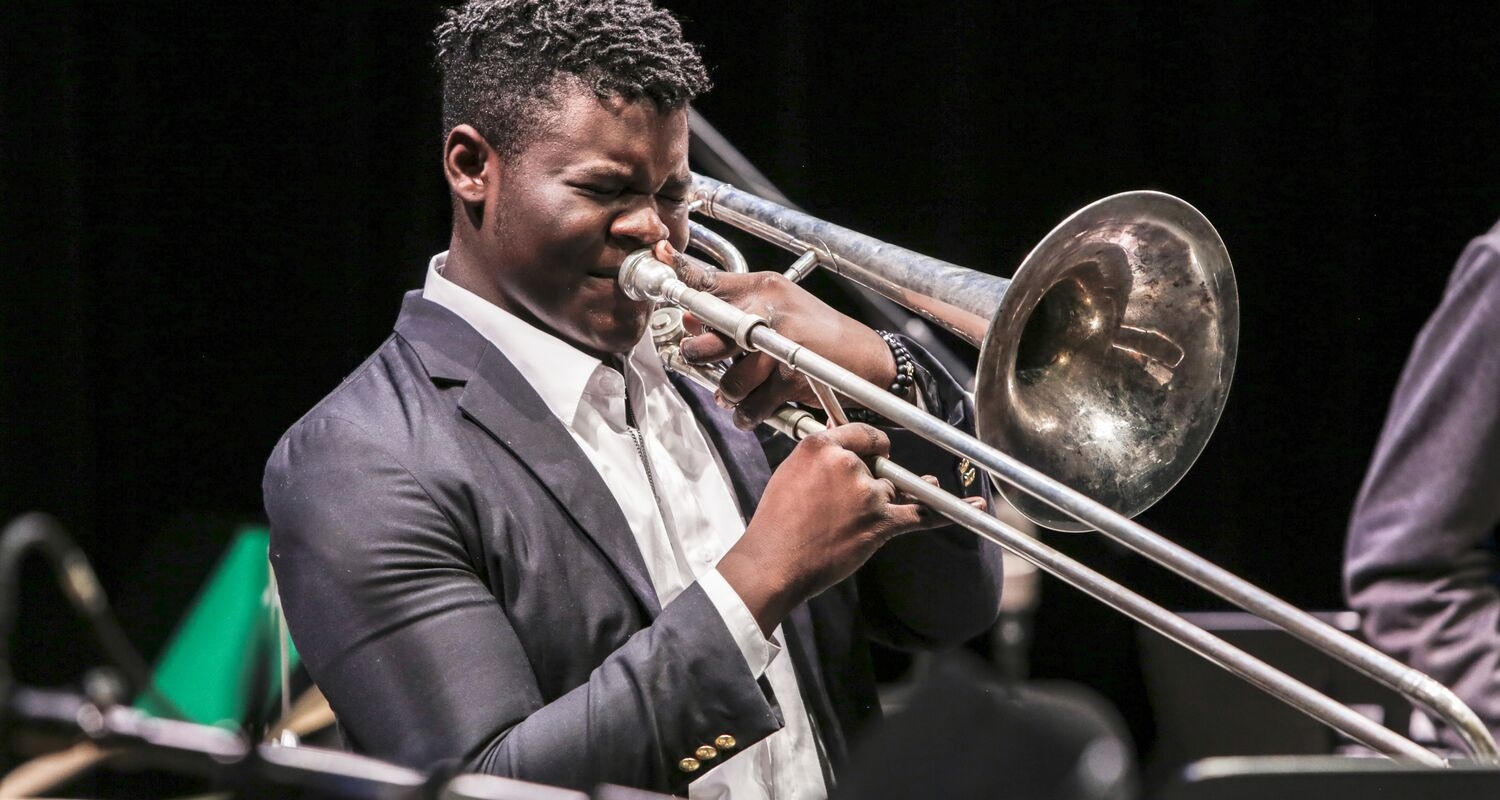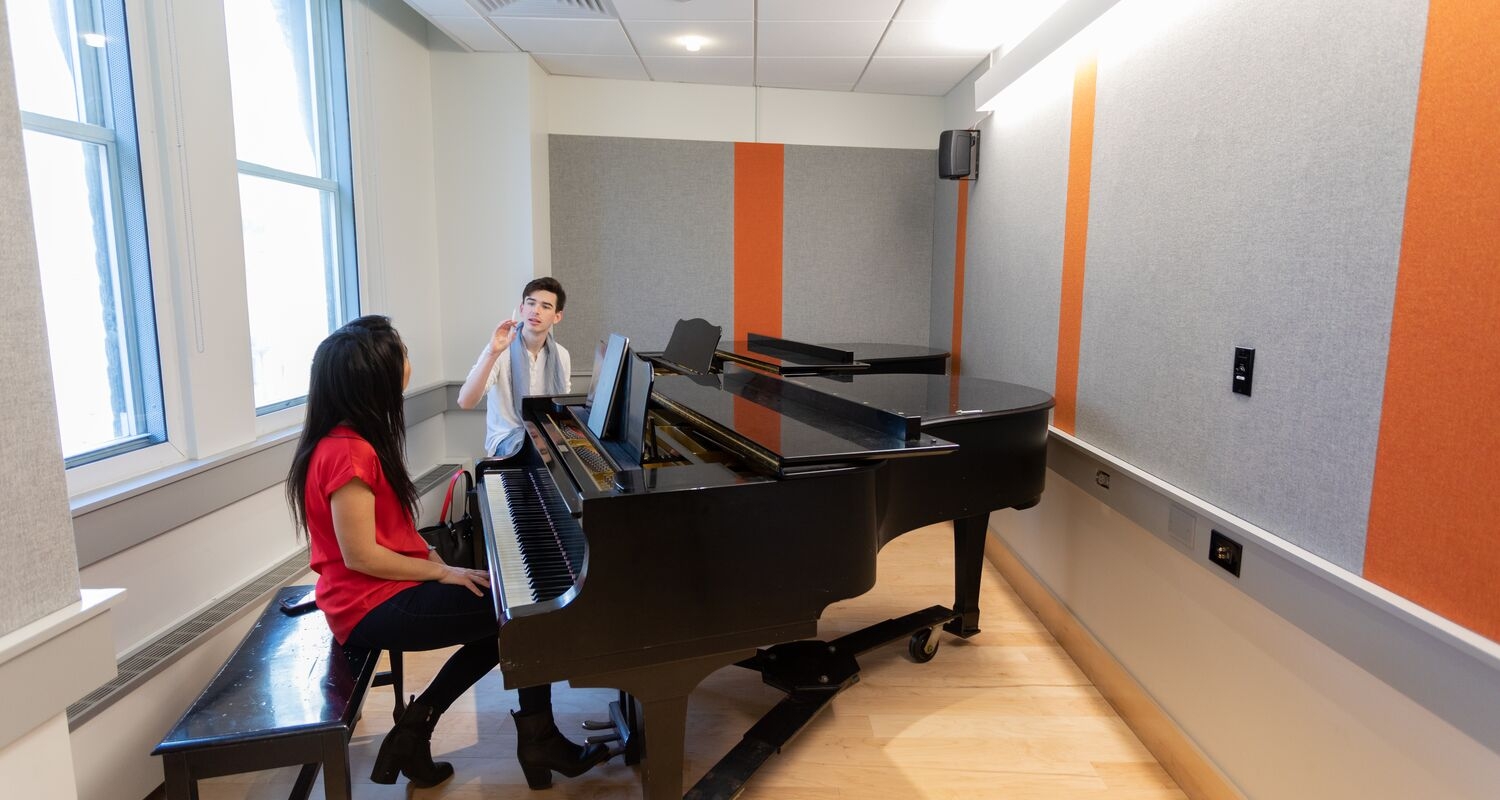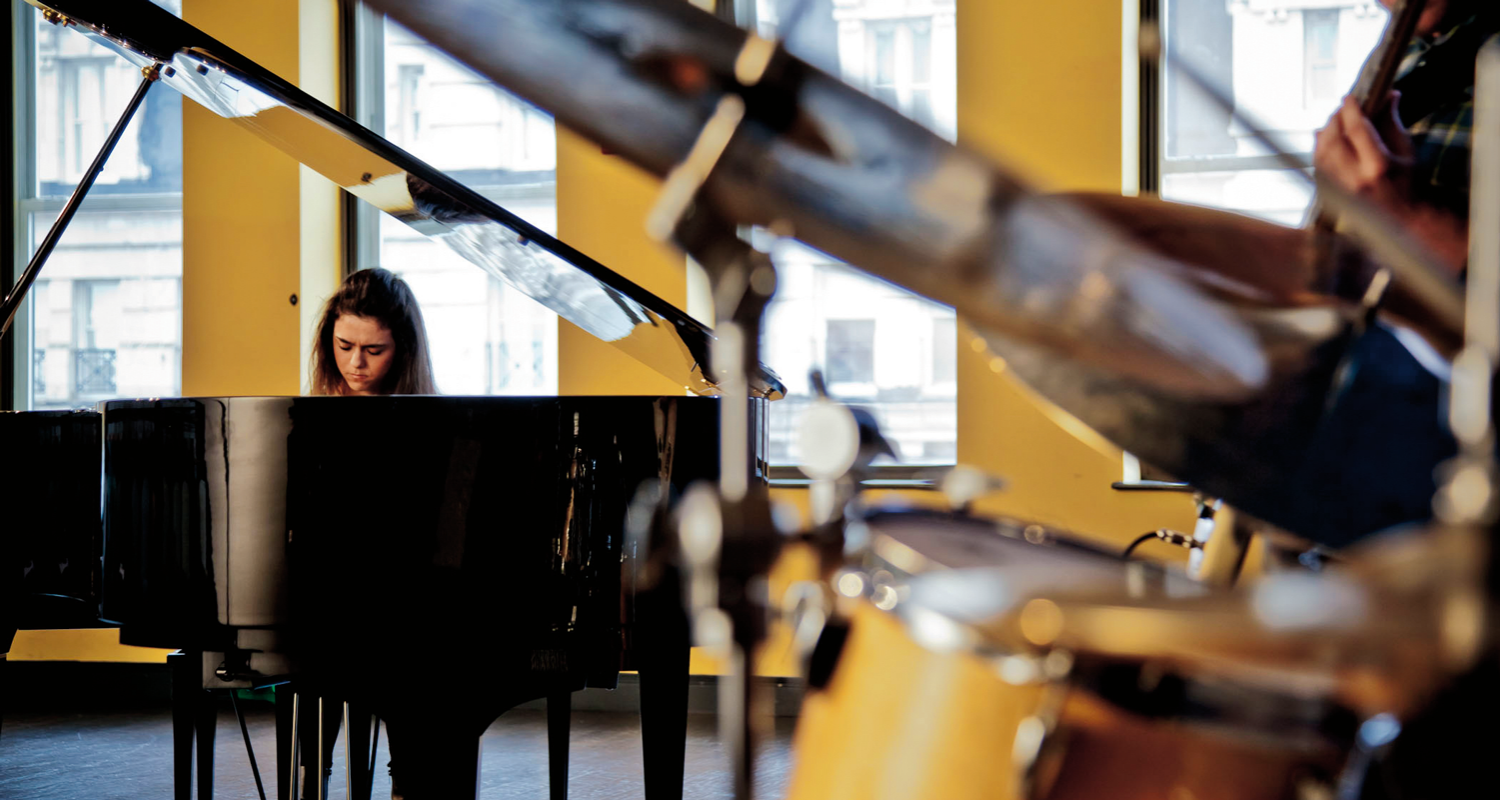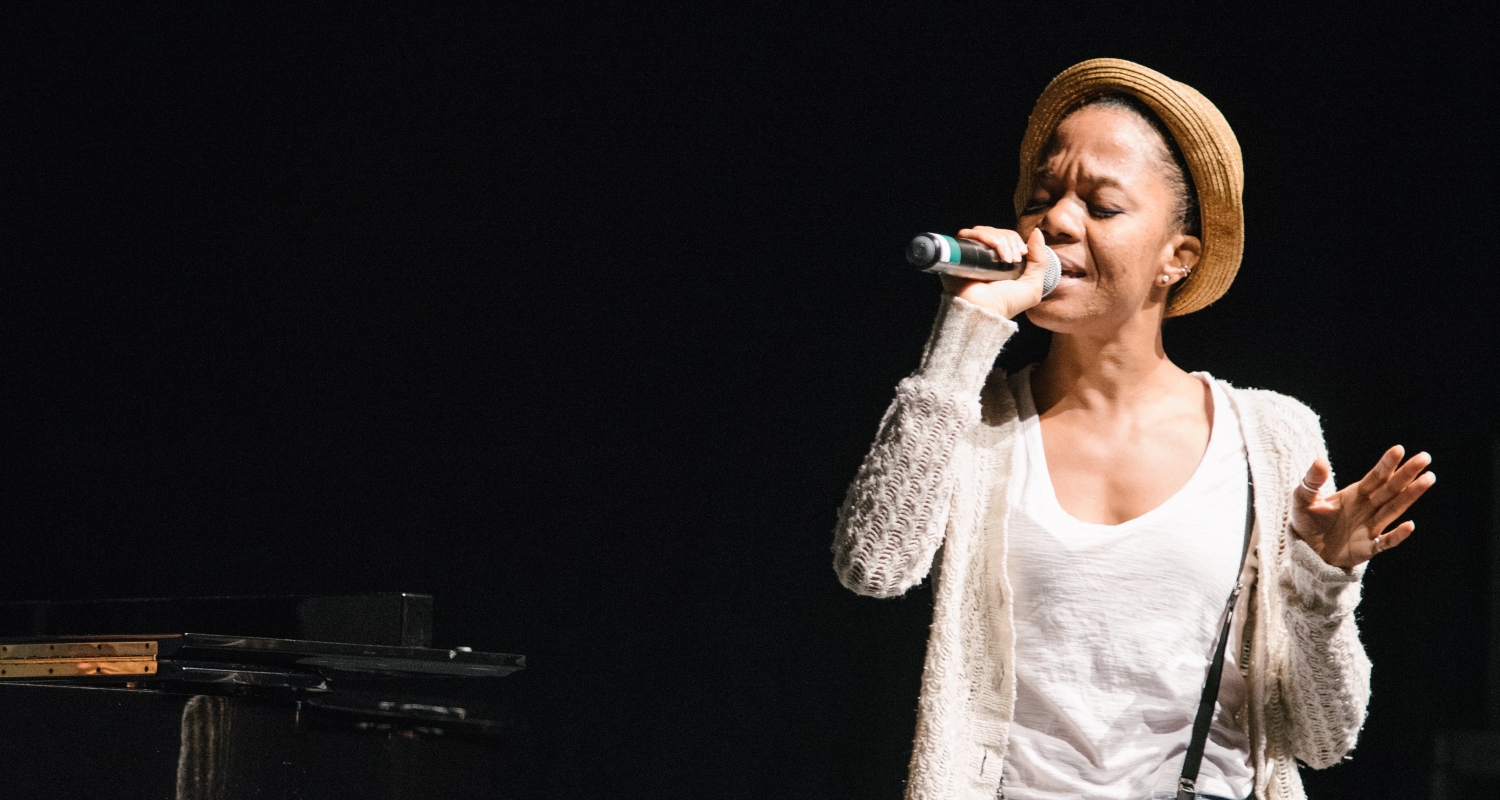



Music Auditions & Interviews
Undergraduate performing arts applicants will select their audition date through their applicant portal after submitting their application. There are no prescreening requirements. All School of Music applicants are required to complete an audition or an interview before they receive an admissions decision. UArts hosts both on-campus and virtual audition days.
View our 2023-2024 audition day schedule.
Learn more about our Music programs by visiting the UArts School of Music.
In-Person/On-Campus Auditions
What to Expect
If participating in an in-person/on-campus audition day, you’ll complete a short information form about your prior experience and goals, a placement exam, and your individual audition or interview.
See your major or instrument repertoire requirements below, and be prepared for your audition or interview.
Instrumental Performance applicants must bring their instrument to their audition, with the exception of the piano, drum set and vibraphone.
All Vocal Performance applicants must perform their repertoire memorized. Applicants must bring copies of their audition music for the accompanist. Alternatively, students may self-accompany on piano or self-provided guitar.
Composition and Music Business, Entrepreneurship, and Technology applicants should bring their portfolio of work, as described below, and be prepared to either leave a hard copy with the department or provide a link to view all work online (Soundcloud, Vimeo, GoogleDrive, etc).
Virtual Auditions
What to Expect
If participating in a virtual audition day, you must upload the following items to your UArts applicant portal at least two weeks before your audition day:
- A headshot
- Information form (available in your portal)
- Major or instrument repertoire; see below for specific requirements
- A repertoire or program list that outlines titles, authors, composers and descriptions of the pieces you’ll be performing
Recordings of recitals or concerts are not acceptable, and your video should not exceed 15 minutes. Videos should feature the performer alone in a room without a live audience. Musicians must show a full-body frame with close-up shots of embouchure, hands and face. You should also include information about the instrument you’re playing.
During the virtual audition, you will participate in a welcome from the School of Music and complete your individual audition or interview.
Can’t Make an Audition Day?
In extenuating circumstances, students who can’t make an audition day may be allowed to submit their materials for asynchronous review. A live audition or interview, either in-person or virtual, is strongly preferred. Students participating in an asynchronous audition may still be asked to complete an individual interview via phone or Zoom once they have uploaded the following items to their UArts applicant portal:
- A headshot
- Information form (available in your portal)
- Major or instrument repertoire; see below for specific requirements
- A repertoire or program list that outlines titles, authors, composers and descriptions of the pieces you’ll be performing
UArts reserves the right to re-audition any applicant admitted on the basis of a submitted audition. In such cases, the university also reserves the right to reconsider and withdraw the original offer of admission or scholarship, if necessary."
Major & Instrument Repertoire Guidelines
Click your program below to learn about audition and recording requirements. If you have any questions about these guidelines, contact Admissions at admissions@uarts.edu.
Bass
Include each of the following.
- two octaves of major and minor scales;
- two octaves of major 7th, minor 7th and dominant 7th arpeggios;
- music reading: Perform a short piece of music from a published book for bass to demonstrate your music reading ability. Provide a copy of the music for the faculty to read during your performance.
- perform two pieces, which showcase your best performance: Ideally, one jazz standard and one of another style choice.
- perform the melody, walk a bass line, and solo each one time through the form for jazz selections.
For video submissions, a live rhythm section (drums, guitar or keyboard) would be preferable. Accompaniment apps like iReal Pro, Band-in-a-Box or other backing tracks are acceptable
Drum Set
Include each of the following.
- Snare Drum; rudimental, marching, drum line, or orchestral solo or excerpt demonstrating technique and rhythmic accuracy (example: Wilcoxon, Firth, Cirone, Lepak pieces, or similar)
- Drum Set; demonstrate at least two of the styles listed below. Students auditioning in-person may use prepared backing tracks or may be asked to accompany existing ones. For video submissions, you may also use a play-along recording, however showing musical interaction is helpful to your audition and using a live rhythm section is preferred over a backing track
- a jazz/swing feel (slow, medium, or fast tempo)
- latin (bossa nova, samba, cha cha cha, or songo)
- rock, funk/R&B, praise, or hip-hop, etc. (slow to moderate tempo)
- ballad (slow with brushes)
- Improvisation: short solos (2s, 4s, or 8s in one of the above styles)
- Reading: perform single line rhythms from published drum notation, such as "Syncopation" by Ted Reed, to demonstrate your music reading and notation recognition ability. Provide a copy of the notation for the faculty to read during your performance.
Guitar
Include each of the following.
- Major and minor scales, two octaves, two fingerings in various keys
- Major 7th, minor 7th and dominant 7th arpeggios, two octaves from 6th and 5th strings in various keys
- Several voicings of major 7th, minor 7th and dominant 7th chords
- Perform two compositions which you feel best represent your abilities:
- An unaccompanied guitar arrangement in any style. Original arrangements that feature harmonized melodies and diverse chord progressions are encouraged.
- A song which demonstrates the ability to play the melody, provide chordal accompaniment, and improvise. This requires a backing track or live recordings of ensembles that feature the applicant.
Piano
Include each of the following.
- major, harmonic and melodic minors, four octaves, two hands, ascending and descending scales using standard Hanon fingering
- major and minor triads, four octaves, two hands, ascending and descending arpeggios using standard Hanon fingering
- an etude or short solo piece from the classical repertoire performed by memory; the level of difficulty should be determined by the applicant’s technical and interpretive ability (e.g., Bach, Two-Part Invention; Bartok, Mikrokosmos; Clementi or any sonatina)
- an improvisation on standard 12-bar blues progression
- one ballad and one up-tempo piece from the standard jazz repertoire that demonstrate melodic interpretation and improvisational skill
- seventh chords in all keys: major 7th, minor 7th, dominant 7th and diminished 7th
Sax, Trumpet, Trombone and all other instruments
Include each of the following.
- two octaves of major and minor scales
- two octaves of major 7th, minor 7th and dominant 7th arpeggios
- a jazz solo transcription, classical piece, or etude from a published music text
- an improvised jazz solo on a standard tune or a 12-bar blues progression
Include three selections total, representing at least two of the following styles.
-
Pop
-
R&B/Soul
-
Rock
-
Jazz
-
Classical song (foreign language or English)
-
Musical theater
-
Other Contemporary (Gospel, Country, Blues, etc.)
-
You may choose two different genres within the contemporary umbrella. e.g. one gospel and one blues or one blues and one country etc.
-
-
Original composition; for original compositions only, applicants auditioning in person must be able to self-accompany or may provide recorded accompaniment
An accompanist will be provided at auditions. Please bring sheet music.
Compile a portfolio of 3–5 original music compositions or songs. Compositions should be presented as notated scores, either by hand or by using computerized notation, and in hard copy or digital format. If submitting songs, a lyric or a lead sheet can be submitted in place of notated scores. You may perform your pieces live or present them via recordings at the audition. If presenting recordings, they should be available online (for example on Soundcloud, YouTube, personal website, etc.). Pieces can be vocal, instrumental or MIDI and should demonstrate your best work in a variety of styles.
Short essay: What do you think the future of the music business looks like? What role do you envision for yourself in this ever-evolving industry, and how will a university education help you get there?
Portfolio: Your portfolio should include your short essay as well as any work you’ve produced and may include recordings; videos; documentation of business experience; or promotional work, like show flyers and website links. You can use Soundcloud, YouTube, Google Drive and other similar services to deliver your materials.
